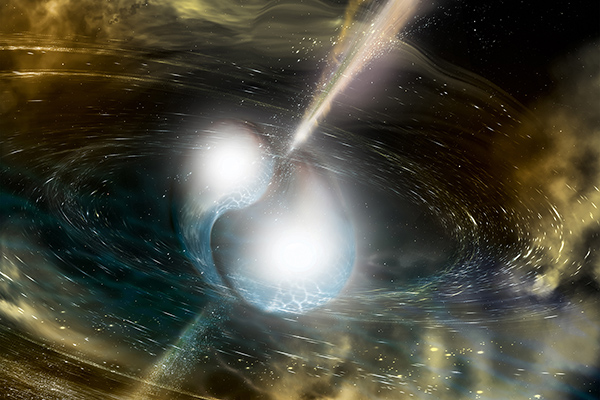
Full Text:
For the first time, scientists have directly detected gravitational waves--ripples in space-time--in addition to light from the spectacular collision of two neutron stars. This marks the first time that a cosmic event has been observed in both gravitational waves and light. The discovery was made using the U.
S.-based Laser Interferometer Gravitational-Wave Observatory; the Europe-based Virgo detector; and some 70 ground- and space-based observatories. Neutron stars are the smallest, densest stars known to exist and are formed when massive stars explode in supernovas. As these neutron stars spiraled together, they emitted gravitational waves that were detectable for about 100 seconds; when they collided, a flash of light in the form of gamma rays was emitted and seen on Earth about 2 seconds after the gravitational waves. In the days and weeks following the smashup, other forms of light, or electromagnetic radiation--including X-ray, ultraviolet, optical, infrared and radio waves--were detected.Image credit: National Science Foundation/LIGO/Sonoma State University/A. Simonnet